Title
Triax element test driver

Description
Triax is an inhouse element test constitutive model driver developed since 2001 at Charles University and elsewhere by David Mašín and coworkers. It covers wide range of constitutive models and testing conditions, including advanced thermo-hydro-mechanical and rate dependent hypoplastic and elasto-plastic models. Virtually, any element test can be simulated using the general procedure by Janda and Mašín (2017), majority of standard and less-standard testing conditions are pre-defined (including complex thermo-hydro-mechanical tests at unsaturated conditions, rate-dependent loading, plotting response envelopes, hypoplastic asymptotic state boundary surfaces and elasto-plastic yield surfaces). Loading stages can be combined to form complex loading paths. Triax can also run any constitutive model implemented in umat format. Download package includes source code, pre-compiled Windows and Linux executables and a wide range of input files associated with different publications by the author.
License & Website
Available Constitutive Models
[Other constitutive models, not present in SoilModels database]
See “Additional Information” section below.
Related Downloads
Related SoilModels Forum Posts
Additional Information
Journal publication input files
Triax input files, Gnuplot files and experimental data files associated with the following papers are included in the download package. Requests for input files from other publications of the author are welcome:
- Mašín, D. (2017). Coupled thermohydromechanical double structure model for expansive soils. ASCE Journal of Engineering Mechanics 143, No. 9. [Preprint PDF]
- Mašín, D. (2013). Clay hypoplasticity with explicitly defined asymptotic states. Acta Geotechnica 8, No. 5, 481-496. [Preprint PDF]
Implemented Constitutive Models
- smallstrain_elasti: Non-linear elastic model predicting small strain stiffness degradation from Mašín and Herle (2005).
- smallstrain_elasti_tris: Transversely isotropic non-linear elastic model predicting small strain stiffness degradation from Mašín and Herle (2005).
- cloe: CLoE model from Chambon et al. (1994).
- cloe_clay: CLoE clay model from Mašín et al. (2005).
- umat: Any user defined model in ABAQUS umat format.
- tskh: Three-surface kinematic hardening model from Stallebrass and Taylor (1997), triaxial (p-q) formulation.
- tskh3D: Three-surface kinematic hardening model from Stallebrass and Taylor (1997), full tensor formulation.
- aitskh: Non-associated three-surface kinematic hardening model from Mašín (2003), triaxial (p-q) formulation.
- aitskh3D: Non-associated three-surface kinematic hardening model from Mašín (2003), full tensor formulation.
- druckprag, young: Drucker-Prager (1952) model.
- lagpotts_camclay: Elasto-plastic model for cemented sand. Hardening rule from Lagioia and Nova (1995), yield and plastic potential surface shape from Lagioia et al. (1996), Modified Cam-clay elasticity.
- mohrcoul, young: Mohr-Coulomb model.
- camclay: Modified Cam-clay model by Roscoe and Burland (1968).
- severntrent: Severn-Trent sand model by Gajo and Wood (1999).
- barcelona_basic: Barcelona Basic Model (BBM) for partially saturated soils from Alonso et al. (1990).
- camclay_soft: Modified Cam-clay model by Roscoe and Burland (1968) enhanced by structure degradation, model from Mašín (2009).
- hypoplasti_vW: von Wolffersdorff (1996) hypoplastic model for sand.
- hypoplasti_vW_istrain: von Wolffersdorff (1996) hypoplastic model for sand enhanced by the intergranular strain concept by Niemunis and Herle (1996).
- hypoplasti_lowangles: Hypoplastic model for soils with low friction angles by Herle and Kolymbas (2004).
- hypoplasti_huang: Hypoplastic model for normally consolidated clay by Huang et al. (2006).
- hypoplasti_clay: Clay hypoplasticity by Mašín (2005).
- hypoplasti_clay_istrain: Clay hypoplasticity by Mašín (2005) enhanced by the intergranular strain concept by Niemunis and Herle (1996).
- hypoplasti_clay_explicit: Clay hypoplasticity with explicit asymptotic state boundary surface by Mašín (2013).
- hypoplasti_clay_anisot: Clay hypoplasticity with explicit asymptotic state boundary surface and stiffness anisotropy by Mašín (2014).
- hypoplasti_clay_explicit_istrain: Clay hypoplasticity with explicit asymptotic state boundary surface by Mašín (2013) enhanced by the intergranular strain concept by Niemunis and Herle (1996).
- hypoplasti_clay_anisot_istrain: Clay hypoplasticity with explicit asymptotic state boundary surface and stiffness anisotropy by Mašín (2014) enhanced by the intergranular strain concept by Niemunis and Herle (1996).
- hypoplasti_camclay: Hypoplastic Cam-clay model by Mašín (2012).
- hypoplasti_clay_squeeze: Clay hypoplastic model improved for undrained conditions by Mašín and Herle (2007).
- hypoplasti_clay_unsat: Hypoplastic model for mechanical response of unsaturated soils by Mašín and Khalili (2008).
- hypoplasti_clay_unsat_expansive: Double structure hydro-mechanical model for expansive clays by Mašín (2013).
- hypoplasti_unsat_expansive_thermal: Double structure hydro-mechanical model for expansive clays by Mašín (2017).
- hypoplasti_clay_unsat_anisot: Mechanical hypoplastic model for unsaturated soils, equivalent of Mašín and Khalili (2008) model, with Mašín (2014) model as saturated driver.
- hypoplasti_clay_unsat_Sr: Hydro-mechanical hypoplastic model for unsaturated soils, combination of the model from Mašín and Khalili (2008) combined with water retention curve by Mašín (2010). This model was used in D’Onza et al. (2011).
- hypoplasti_clay_unsat_Sr_anisot: Coupled hydro-mechanical model for unsaturated soils. Equivalent of hypoplasti_clay_unsat_Sr model with Mašín and Khalili (2008) model as saturated driver.
- hypoplasti_clay_unsat_Sr_anisot_istrain: Coupled hydro-mechanical model for partially saturated soils predicting small strain stiffness from Wong and Mašín (2014).
- hypoplasti_unsat_thermo: Thermo-mechanical model for variably saturated soils by Mašín and Khalili (2012).
- hypoplasti_clay_soft: Hypoplastic model for clays with meta-stable structure by Mašín (2007).
Pre-defined laboratory tests
- biax_undrained: Undrained biaxial test
- triax_drained: Drained triaxial (axisymmetric) test
- simple_shear: Simple shear test
- simple_shear_undr: Undrained simple shear test
- straincontrol_wholetensor: Strain controlled test, full strain tensor specified
- strain_cycle: Strain circles in the epsilon_axial vs. sqrt(2)*epsilon_radial space with moving radius (centre of circle rate and direction specified).
- triax_constp: Constant mean stress triaxial (axisymmetric) shear test
- triax_constax: Constant axial stress triaxial (axisymmetric) test
- triax_constq: Constant deviatoric stress triaxial (axisymmetric) test
- triax_stressdir: Triaxial (axisymmetric) test with constant direction in q vs. p plane, direction is pre-defined
- triax_constp3D: Constant mean stress true triaxial test with pre-defined Lode angle
- triax_cpcirc3D: True triaxial test with stress cycles in deviatoric plane, direction (clockwise/anticlockwise) and final Lode angles are specified
- triax_constdir_pq: Triaxial (axisymmetric) test with constant direction in q vs. p plane, target values of p and q are pre-defined
- triax_straindir: Triaxial (axisymmetric) test with constant direction in epsilon_v vs.epsilon_s plane, direction is pre-defined
- triax_straindir_psidir: Triaxial (axisymmetric) test with constant direction in epsilon_v vs.epsilon_s plane, angle psi_epsilon from Gudehus and Mašín (2009) is pre-defined
- triax_K0: Oedometric test (axisymmetric one-dimensional compression)
- triax_K0_unsat: Unsaturated oedometric test (axisymmetric one-dimensional deformation conditions with suction change)
- triax_unsat_swellingpressure: Swelling pressure test (constant volume conditions with suction change)
- triax_constwc_unsat: Triaxial (axisymmetric) shear test at unsaturated conditions with constant water content
- triax_undrained: Triaxial (axisymmetric) undrained shear test
- triax_undrained_Kw: Triaxial (axisymmetric) undrained shear test, defined by high bulk modulus of water rather than by constant volume conditions
- triax_unsat_constqnet: Triaxial (axisymmetric) test at unsaturated conditions with constant deviatoric stress
- triax_unsat_constsignet: Triaxial (axisymmetric) test at unsaturated conditions with constant net stress (free deformation water retention curve test)
- triax_temper_constsig: Triaxial (axisymmetric) variable temperature test at constant stress
- triax_temper_constsig_constwc_sat: Triaxial (axisymmetric) variable temperature undrained test at saturated conditions
- triax_temper_constsig_constwc_unsat: Triaxial (axisymmetric) variable temperature constant water content test at unsaturated conditions
- resp_envelope: Response envelope
- resp_envelope_incr: Incremental stress response envelope
- strain_resp_envelope: Incremental strain response envelope
Other keywords
- next_step: Changes integration step for the next stage
- init_pq: Initialise p and q
- init_sasr: Initialise axial and radial stress for axisymmetric simulation
- init_pq_unsat: Initialise p, q, ua and uw for partially saturated simulations
- init_pq_unsat_temper: Initialise p, q, ua, uw and temperature for partially saturated thermal simulations
- init_stresstensor_unsat_temper: Initialise complete stress tensor, ua, uw and temperature for partially saturated thermal simulations
- init_stresstensor: Initialise complete stress tensor
- rezero_strains: Resets strains
- rezero_time: Resets time
- change_step: Changes integration step for all forthcoming stages
- stage: Specifies calculation stage
- noresults_for_stages: Sets stage numbers for which results should not be saved in the output file (default: inactive)
- results_for_stages: Sets stage numbers for which results should be saved in the output file (default: all stages)
- set_3Dresults: Changes output file mode to “3Dresults”
- set_res_unsat: Changes output file mode to “unsat”
- set_res_strainenergy: Changes output file mode to “strainenergy”
- set_ratedep: Changes output file mode and input file structure for rate-dependent models
- save_every: Sets to save only n-th results to output file
- use_general: Use general specifications of laboratory tests (E and S materices) by Janda and Mašín (2017).
Installation (readme.txt)
First, please see triax homepage at https://soilmodels.com/triax. Then, check triax_user_manual_YEAR.pdf, which you will find in the main directory of the downloaded archive. It describes how to run triax software using input files and the basic structure of the input and output files.
Example input files corresponding to simulations from various journal articles can be found under directory “inputfiles”. To find the specific input file, proceed as follows:
1) Select figure from one of the included publications
2) Find corresponding .eps file of that figure in the publication folder.
3) Find Gnuplot file (extension .gp) of the same name as the .eps file
4) Open that gnuplot file in the text editor, find triax output files (extension .out) which were used to create that plot.
5) Find the corresponding input file (the same file name base, extension .inp).
Note: you can use the same procedure to find the experimental data used to create the plots.
Note: in some cases, model parameters are not included in input files, but in the external “plasti_data.dta” file. In that case, these are parameters associated to all input files in the same folder. Simulations will not run if the “plasti_data.dta” file is removed from the input file folder.
Note: Simple Forward Euler scheme is used for model integration. Small enough integration step needs to be used to get accurate results.
To run the simulations, proceed as follows:
WINDOWS:
Triax software is under the path “wintriax/Release/triax.exe”. To run it, please select one of the following two methods:
1) rename the input file to triax.inp, place it in the same directory as triax.exe and double click on triax.exe.
2) use command prompt and run using “triax inputfilename.inp” or “triax inputfilename.inp outputfilename.out”. This is preferred way of usage, as you can read on-screen information and run the software with different input file names. To open command prompt, type “cmd” in Windows software search box. After opening, change directory to the actual triax directory using “cd /d C:\YOURPATH\triax\inputfiles\SELECTEDFOLDER”. Replace “C:” by your drive letter.
If you want to further investigate or modify triax, download “Microsoft Visual Studio” from https://www.visualstudio.com (“Community” verison is sufficient), install “Desktop development with C++” module, open the file “wintriax/triax.sln” in Visual Studio and modify or build new triax depending on your needs.
Note: Windows version of triax is not set up to run ABAQUS umats. To run umats, you need to link Intel Fortran libraries to Visual Studio and setup mixed programming language linker yourself, or use LINUX version.
LINUX:
Triax software is under the paths “lintriax/triax”. Run it using “triax inputfilename.inp” or “triax inputfilename.inp outputfilename.out”.
If you want to further investigate or modify triax, install g++ and gfortran compilers (commands “sudo apt-get install g++” and “sudo apt-get install gfortran”). To compile triax, type “make” in the lintriax folder. If you want to link your umat, replace umat.f in lintriax folder by your umat.
Note: you only need to install gfortran if you want to compile triax with umat. Otherwise, if you did not install gfortran, you need to delete directive “-DUMATUSE=1” and other gfortran and umat related directives from makefile to compile.
Note: You can calculate all input files in folder using command “for i in *.inp; do triax $i; done”
References
Alonso, E., Gens, A. and Josa, A. (1990) A constitutive model for partially saturated soils. Géotechnique, 40(3): 405–430.
Chambon R., Desrues J., Hammad W., Charlier R. (1994). CLoE, a new rate type constitutive model for geomaterials. Theoretical basis and implementation. Int. J. Num. Anal. Meth. Geom. 18 253-278.
D’Onza, F., Gallipoli, D., Wheeler, S., Casini, F., Vaunat, J., Khalili, N., Laloui, L., Mancuso, C., Mašín, D., Nuth, M., Pereira, J. M. and Vassallo, R. (2011). Benchmark of constitutive models for unsaturated soils. Géotechnique 61, No. 4, 283-302. [Preprint PDF]
Drucker, D. C. and Prager, W. (1952). Soil mechanics and plastic analysis for limit design. Quarterly of Applied Mathematics, vol. 10, no. 2, pp. 157–165.
Gajo, A. and Muir Wood, D. (1999). Severn–Trent sand: a kinematic-hardening constitutive model: the q–p formulation. Géotechnique 49, No. 5, 595-614.
Gudehus, G. and Mašín, D. (2009). Graphical representation of constitutive equations. Géotechnique 59, No. 2, 147-151. [Preprint PDF]
Herle I, Kolymbas D. (2004) Hypoplasticity for soils with low friction angles. Computers and Geotechnics 31:365–373.
W.-X. Huang, W. Wu, D.-A. Sun, and S. Sloan. (2006) A simple hypoplastic model for normally compressed clay. Acta Geotechnica, 1(1):15–27.
Janda, T. and Mašín, D. (2017). General method for simulating laboratory tests with constitutive models for geomechanics. International Journal for Numerical and Analytical Methods in Geomechanics 41, No. 2, 304-312. [Preprint PDF]
Lagioia R, Nova R. (1995) An experimental and theoretical study of the behaviour of a calcarenite in triaxial compression. Géotechnique 45:633–48.
R. Lagioia, A. M. Puzrin, and D. M. Potts. (1996). A new versatile expression for yield and plastic potential surfaces. Computers and Geotechnics, 19(3):171–191, 1996.
Mašín, D. (2003). A Kinematic Hardening Critical State Model for Anisotropic Clays. In Proc. Constitutive Modelling and Analysis of Boundary Value problems in Geotechnical Engineering, Napoli, Italy; 253-263.
Mašín, D. (2005). A hypoplastic constitutive model for clays. International Journal for Numerical and Analytical Methods in Geomechanics 29, No. 4, 311-336. [Preprint PDF]
Mašín, D. and Herle, I. (2005). Numerical analyses of a tunnel in London clay using different constitutive models. In Proc. 5th Int. Symposium TC28 Geotechnical Aspects of Underground Construction in Soft Ground, Amsterdam, The Netherlands; 595-600.
Mašín, D., Chambon, R. and Desrues, J. (2005). CLoE model modified to predict the behaviour of normally compressed clays. In Proc. 11th Int. Conference of IACMAG, Turin, Italy; Vol. 2, 417-424.
Mašín, D. and Herle, I. (2007). Improvement of a hypoplastic model to predict clay behaviour under undrained conditions. Acta Geotechnica 2, No. 4, 261-268. [Preprint PDF]
Mašín, D. (2007). A hypoplastic constitutive model for clays with meta-stable structure. Canadian Geotechnical Journal 44, No. 3, 363-375. [Preprint PDF]
Mašín, D. and Khalili, N. (2008). A hypoplastic model for mechanical response of unsaturated soils. International Journal for Numerical and Analytical Methods in Geomechanics 32, No. 15, 1903-1926. [Preprint PDF]
Mašín, D. (2009). Comparison of predictive capabilities of selected elasto-plastic and hypoplastic models for structured clays. Soils and Foundations 49, No. 3, 381-390. [Preprint PDF]
Mašín, D. (2010). Predicting the dependency of a degree of saturation on void ratio and suction using effective stress principle for unsaturated soils. International Journal for Numerical and Analytical Methods in Geomechanics 34, No. 1, 73-90. [Preprint PDF]
Mašín, D. (2012). Hypoplastic Cam-clay model. Géotechnique 62, No. 6, 549-553. [Preprint PDF]
Mašín, D. and Khalili, N. (2012). A thermo-mechanical model for variably saturated soils based on hypoplasticity. International Journal for Numerical and Analytical Methods in Geomechanics 36, No. 12, 1461-1485. [Preprint PDF]
Mašín, D. (2013). Clay hypoplasticity with explicitly defined asymptotic states. Acta Geotechnica 8, No. 5, 481-496. [Preprint PDF]
Mašín, D. (2013). Double structure hydromechanical coupling formalism and a model for unsaturated expansive clays. Engineering Geology 165, 73-88. [Preprint PDF]
Mašín, D. (2014). Clay hypoplasticity model including stiffness anisotropy. Géotechnique 64, No. 3, 232-238. [Preprint PDF]
Mašín, D. (2017). Coupled thermohydromechanical double structure model for expansive soils. ASCE Journal of Engineering Mechanics 143, No. 9. [Preprint PDF]
Niemunis A, Herle I. (1997). Hypoplastic model for cohesionless soils with elastic strain range. Mechanics of Cohesive-Frictional Materials; 2:279–299.
Roscoe, K. H. and Burland, J. B. (1968). On the generalised stress-strain behaviour of wet clay. J. Heyman and F. A. Leckie (eds.), Engineering Plasticity, pp 535–609. Cambridge: Cambridge Univesrity Press.
Stallebrass, S. E. and Taylor, R. N. (1997). Prediction of ground movements in overconsolidated clay. Géotechnique 47, No. 2, 235–253.
von Wolffersdorff PA. (1996) A hypoplastic relation for granular materials with a predefined limit state surface. Mechanics of Cohesive-Frictional Materials 1:251–271.
Wong, K. S. and Mašín, D. (2014). Coupled hydro-mechanical model for partially saturated soils predicting small strain stiffness. Computers and Geotechnics 61, 355-369. [Preprint PDF]

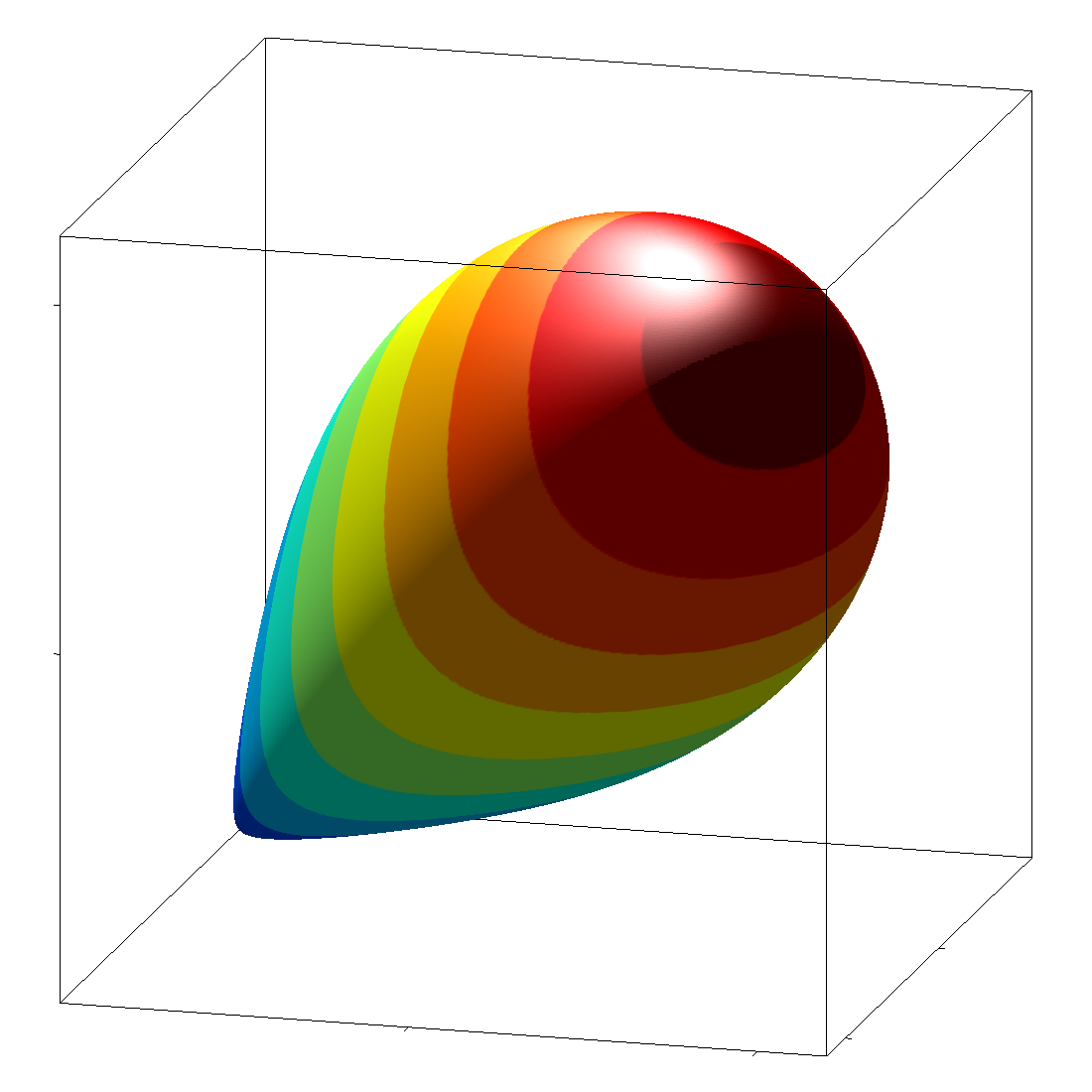
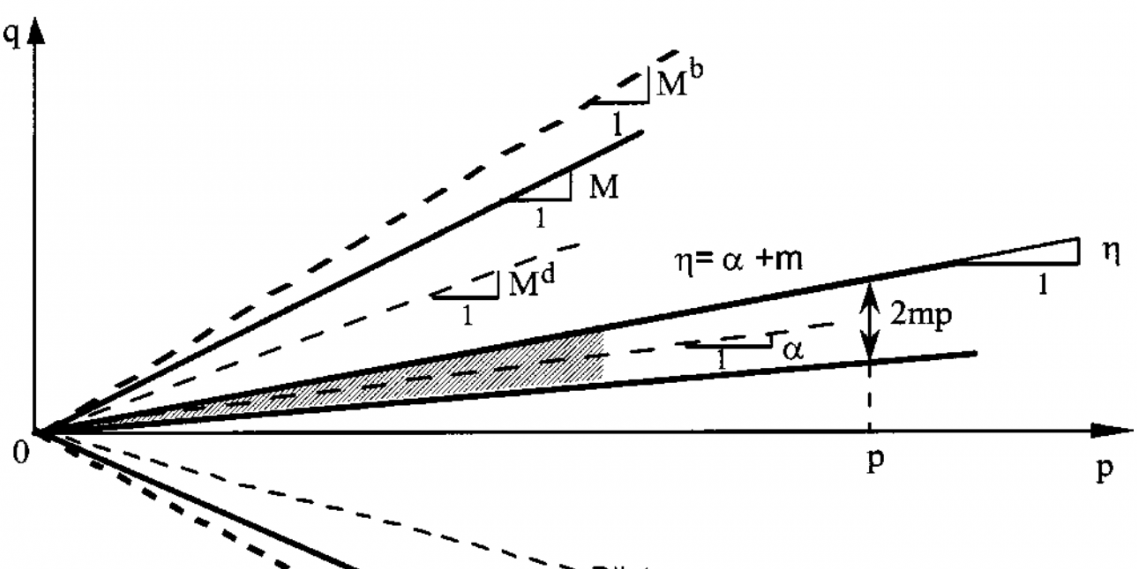
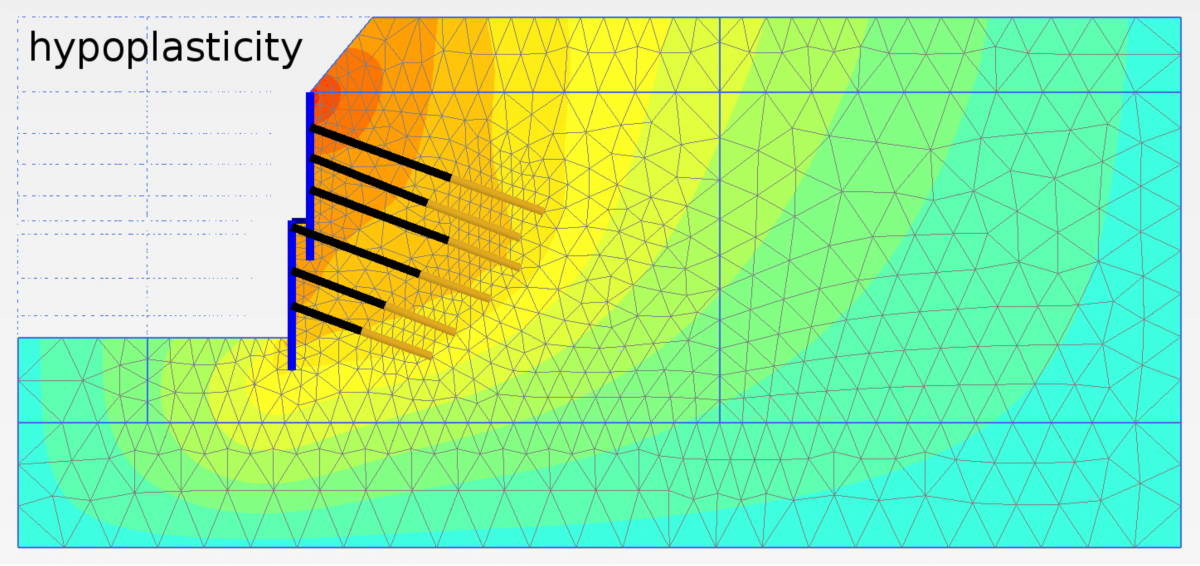
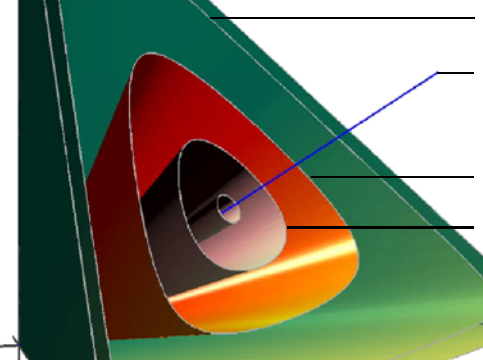
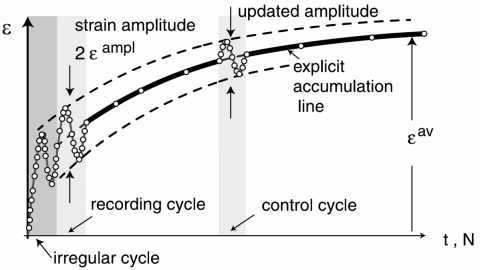
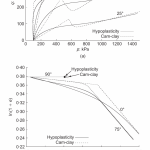

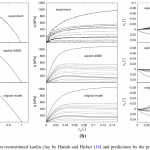
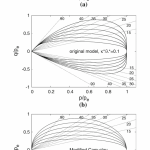
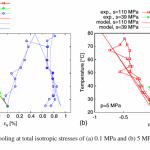

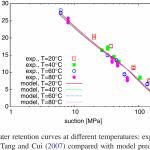
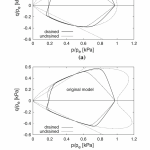
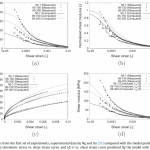
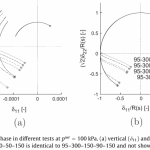
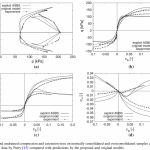
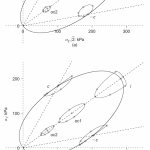
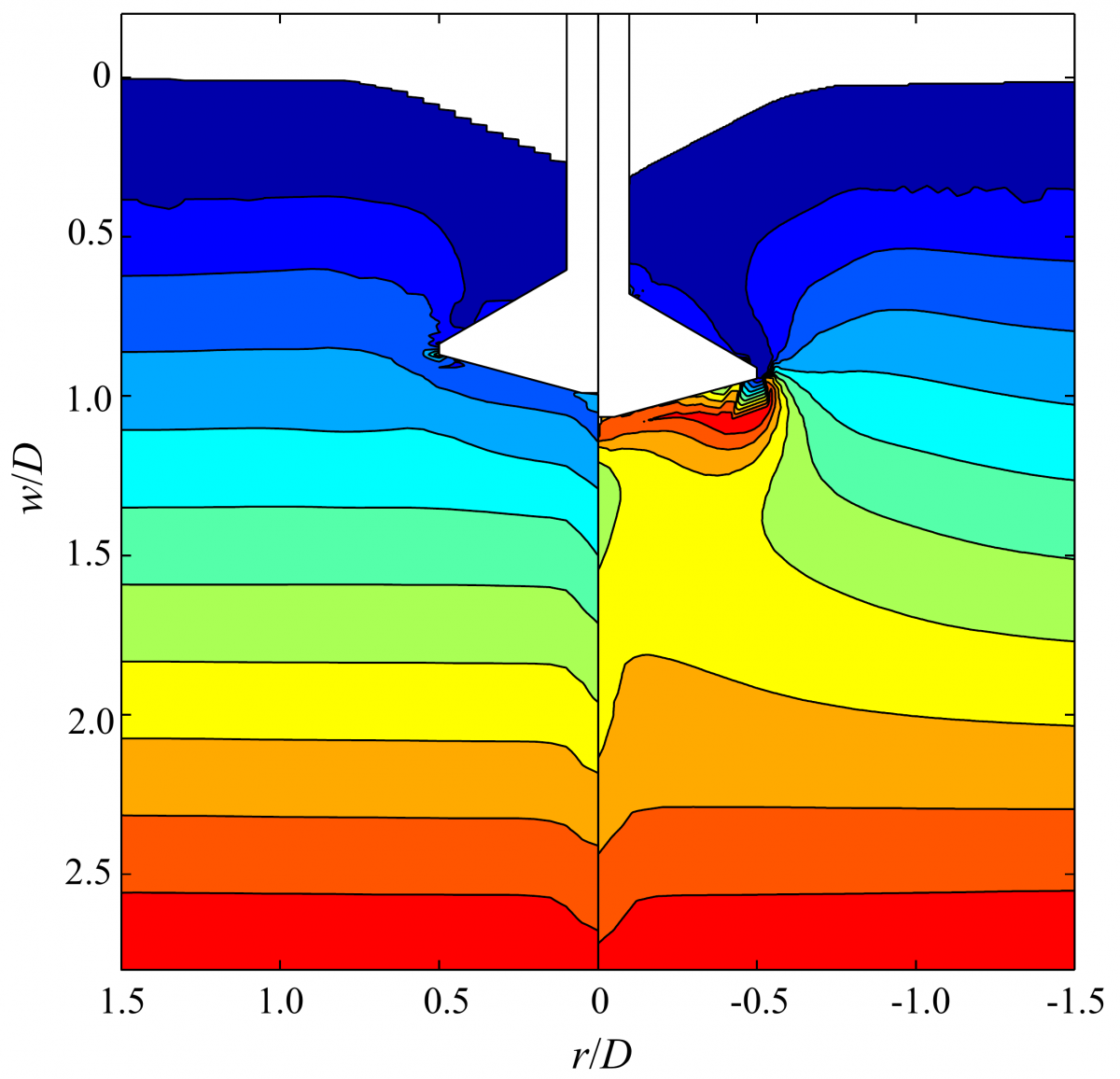
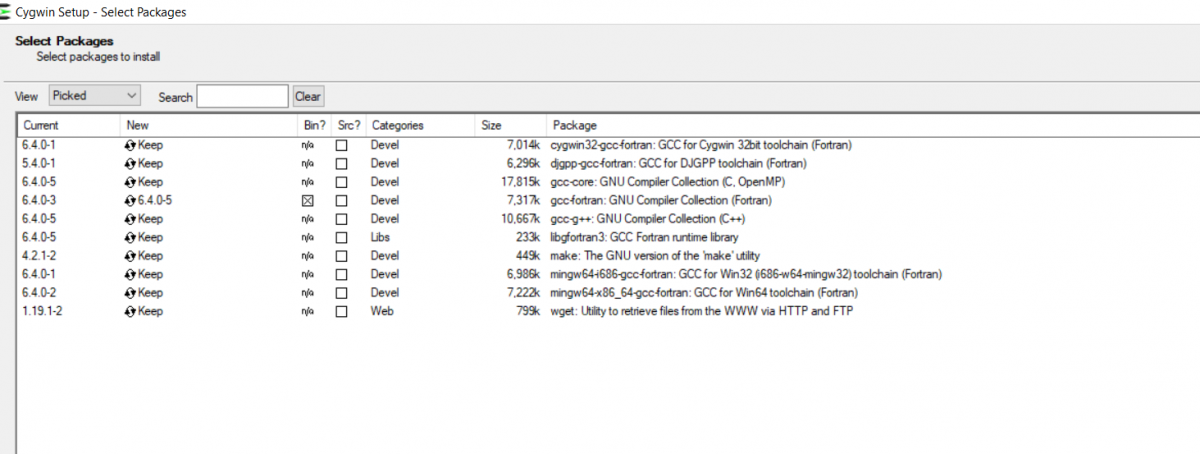
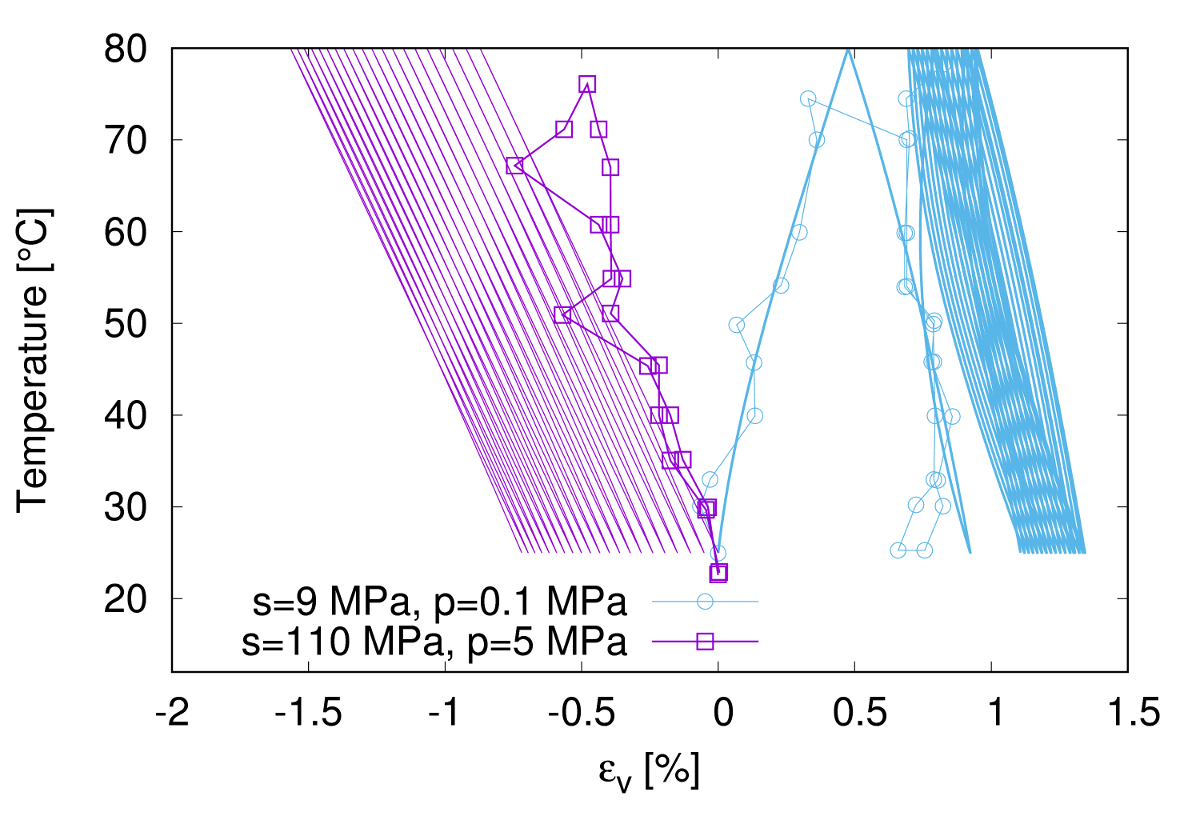


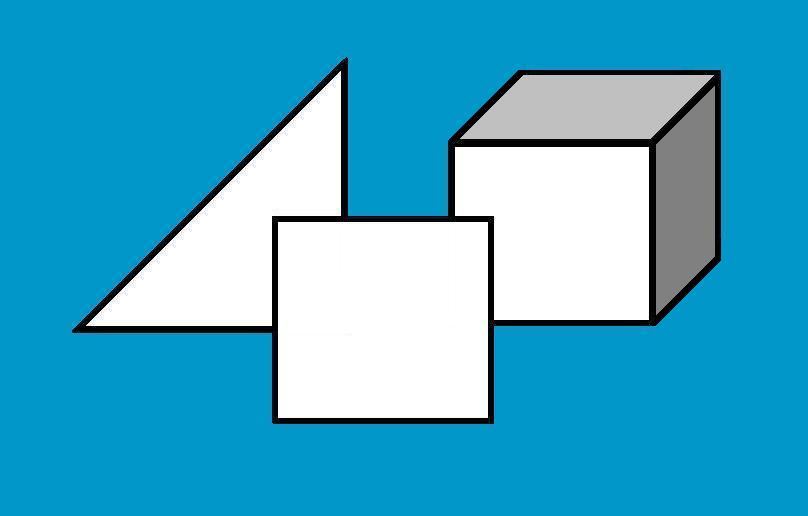


Dear all,
I have downloaded Triax, and ran the input file of examples(Masin 2017 Coupled Thermohydromechanical Double Structure Model for Expansive Soils) successfully. But when I ran these inputs with the new compiled Triax (without modification of source code), the error occurred. Triax continued to decreasing the step size until the termination of calculation.
Initializing the unsaturated stress state and temperature
Changing step for the test in the next stage
Calculation of stage 15
Problem in soil_model (update check), trying to decrease step size to 2.5e-06
Problem in soil_model (update check), trying to decrease step size to 1.25e-06
Problem in soil_model (update check), trying to decrease step size to 6.25e-07
Problem in soil_model (update check), trying to decrease step size to 3.125e-07
Problem in soil_model (update check), trying to decrease step size to 1.5625e-07
… …
Problem in soil_model (update check), trying to decrease step size to 8.88178e-21
After checking the difference of output from command lines, I found that the summary of hypoplasti_unsat_expansive_thermal model is different.
For the original Triax, it is:
hypoplasti_unsat_expansive_thermal
: ficr, lambda, kappa, N, nu (basic model)
: ns, ls, nT, lT, m (SBS, m for collapse)
: alpha_s, kappa_m, sm*, em*, fsh (microstructure)
: seref, eMref, Tref, aT, bT, aer (WRC)
: pt (stress shift)
: einit, ascaninit (initial values of state variables)
But for the new compiled Triax, it is:
hypoplasti_unsat_expansive_thermal
: ficr, lambda, kappa, N, nu (basic model)
: ns, ls, nT, lT, m (SBS, m for collapse)
: alpha_s, kappa_m, sm*, em*, fsh (microstructure)
: seref, eMref, Tref, aT, bT, aer, lambdap0 (WRC)
: pt (stress shift)
: einit, ascaninit (initial values of state variables)
It has a additional parameter: lambdap0, which is not occured in output of original Triax.
Does anyone know how to correct this issue ? Any suggestion will be appreciated.
Regards
Whether the precompiled Triax uses a different file than the currently provided source file?
Maybe the parameters provided by the input file are not consistent with the version of the source file.
I’ve tried the new compilation on Windows and Linux, both of which run the same results.
Dear Cheng, thanks, we have added additional parameter but did not update the input files. lambdap0 was there already before, whith default value 0.55. Now you can specify it through input, if you use 0.55, you will get the same results as in the paper. I corrected it at SoilModels now. Regards David
Dear Prof. David,
The calculations can perform properly with the new files now. Thank you so much for your help.
Regards
Dear Prof. David Mašín,
thanks for the share. I download the Triax element test driver. It works well in Linux, but I cannot compile it with Windows since there is no source file in the “wintriax” folder.
Could you please tell me how to compile the driver in the Windows environment?
with best regards
Dear Wang, actually the visual studio input triax.sln in wintriax folder should automatically link source files from lintriax folder… Maybe you copied wintriax folder to different location? Please try to re-download and keep the folder structure unchanged. If it does not work for some reason, you can always link source files from lintriax folder manually. Let us know which solution worked for you. Regards David
This software is not downloadable for for. Can someone help with a functional download link??? Thanks in advance.
Regards
Dear all,
I am trying to simulate some triaxial tests via the Triax program. Could someone provide some examples?
Thanks in advance